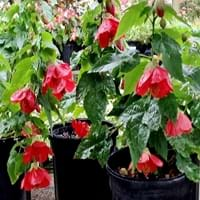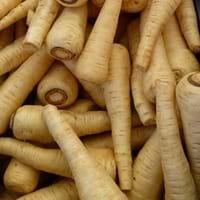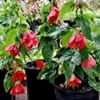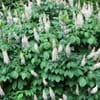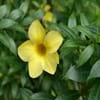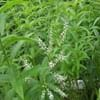Life Span
Annual
Biennial and Perennial
Type
Tender Perennial
Vegetable
Origin
-
Europe, Western Asia
Habitat
subtropical regions
waste ground, wastelands
USDA Hardiness Zone
8-10
4-9
Sunset Zone
H1, H2, 8, 9, 12, 13, 14, 15, 16, 17, 18, 19, 20, 21, 22, 23, 24
A1, A2, A3, H1, H2, 1a, 1b, 2a, 2b, 3a, 3b, 4, 5, 6, 7, 8, 9, 10, 11, 12, 13, 14, 15, 16, 17, 18, 19, 20, 21, 22, 23, 24
Habit
Oval or Rounded
Rosette/Stemless
Flower Color
Pink, Peach
Yellow
Flower Color Modifier
-
Bicolor
Fruit Color
-
Brown, Black
Leaf Color in Spring
Green, Gray Green, Dark Green, Ivory
Green
Leaf Color in Summer
Green, Gray Green, Dark Green, Ivory
Green
Leaf Color in Fall
Green, Gray Green, Dark Green, Ivory
Green
Leaf Color in Winter
Green, Gray Green, Dark Green, Ivory
-
Leaf Shape
Maple shaped
Pinnate
Plant Season
Spring, Summer, Fall, Winter
Summer
Sunlight
Full Sun, Partial Sun
Full Sun
Type of Soil
Loam, Sand
Loam
The pH of Soil
Acidic, Neutral, Alkaline
Neutral
Soil Drainage
Well drained
Well drained
Bloom Time
Indeterminate
Summer
Where to Plant?
Ground, Pot
Ground, Pot
How to Plant?
Cuttings, Seedlings
Seedlings
Plant Maintenance
Medium
Medium
Watering Requirements
Do Not over Water, Keep ground moist, Keep the Soil well drained, Requires regular watering
Average Water Needs, Do Not over Water, Keep the ground moist but not water-logged
In Summer
Lots of watering
Lots of watering
In Spring
Moderate
Moderate
In Winter
Average Water
Average Water
Soil pH
Acidic, Neutral, Alkaline
Neutral
Soil Type
Loam, Sand
Loam
Soil Drainage Capacity
Well drained
Well drained
Sun Exposure
Full Sun, Partial Sun
Full Sun
Pruning
Prune to stimulate growth, Remove damaged leaves, Remove dead branches, Remove dead leaves
Remove damaged leaves, Remove dead branches, Remove dead leaves
Fertilizers
20-20-20 amount
All-Purpose Liquid Fertilizer
Pests and Diseases
Abutilon mosaic virus, Aphids, Beetles, Scale
Aphids, Armyworm, Cutworms, Downy mildew, Pitch canker, Red blotch
Plant Tolerance
-
Drought
Flower Petal Number
Single
-
Fragrant Bark/Stem
No
Yes
Foliage Texture
Medium
Fine
Foliage Sheen
Matte
Matte
Attracts
Butterflies, Flying insects, Hummingbirds
Butterflies
Aesthetic Uses
Beautification, Bonsai, Cut Flowers, Decorating walls, Hanging Basket, small hedge, Used as an interior landscaping species
-
Beauty Benefits
-
Blood purifying, Good for skin
Environmental Uses
Air purification
Air purification
Medicinal Uses
-
Aphrodisiac
Part of Plant Used
-
Root
Other Uses
Cut Flowers, Decoration Purposes, Grown in botanical gardens as a specimen, Used as Ornamental plant, Used for Landscaping
Food for animals, Used as a nutritious food item
Used As Indoor Plant
No
Yes
Used As Outdoor Plant
Yes
Yes
Garden Design
Bedding Plant, Container, Feature Plant, Foundation, Hedges, Mixed Border, Topiary / Bonsai / Espalier, Tropical
Edible, Herb, Vegetable
Botanical Name
ABUTILON 'Savitzii'
PASTINACA sativa
Common Name
Flowering Maple, Parlour Maple
Parsnip
In Hindi
flowering maple
चुकंदर
In German
Schönmalve
Pastinake
In French
érable floraison
Panais
In Spanish
arce de floración
Chirivía
In Greek
ανθοφορία σφενδάμου
Είδος δαυκίου
In Portuguese
de bordo florescimento
cherivia
In Polish
klon kwitnienia
Pasternak
In Latin
Abutilon
parsnip
Phylum
Magnoliophyta
Magnoliophyta
Class
Magnoliopsida
Magnoliopsida
Family
Malvaceae
Apiaceae
Clade
Angiosperms, Rosids
Angiosperms, Asterids, Eudicots
Season and Care of Flowering Maple and Parsnip
Season and care of Flowering Maple and Parsnip is important to know. While considering everything about Flowering Maple and Parsnip Care, growing season is an essential factor. Flowering Maple season is Spring, Summer, Fall and Winter and Parsnip season is Spring, Summer, Fall and Winter. The type of soil for Flowering Maple is Loam, Sand and for Parsnip is Loam while the PH of soil for Flowering Maple is Acidic, Neutral, Alkaline and for Parsnip is Neutral.
Flowering Maple and Parsnip Physical Information
Flowering Maple and Parsnip physical information is very important for comparison. Flowering Maple height is 90.00 cm and width 60.00 cm whereas Parsnip height is 15.20 cm and width 7.60 cm. The color specification of Flowering Maple and Parsnip are as follows:
Flowering Maple flower color: Pink and Peach
Flowering Maple leaf color: Green, Gray Green, Dark Green and Ivory
Parsnip flower color: Yellow
- Parsnip leaf color: Green
Care of Flowering Maple and Parsnip
Care of Flowering Maple and Parsnip include pruning, fertilizers, watering etc. Flowering Maple pruning is done Prune to stimulate growth, Remove damaged leaves, Remove dead branches and Remove dead leaves and Parsnip pruning is done Remove damaged leaves, Remove dead branches and Remove dead leaves. In summer Flowering Maple needs Lots of watering and in winter, it needs Average Water. Whereas, in summer Parsnip needs Lots of watering and in winter, it needs Average Water.
